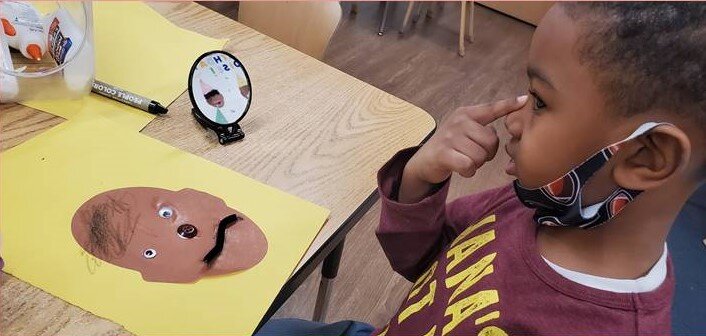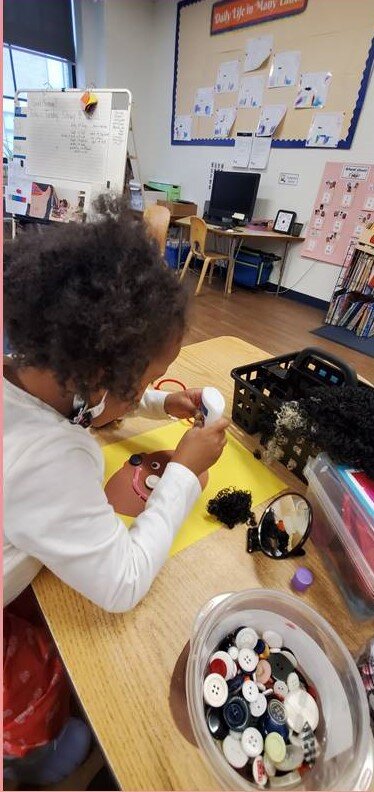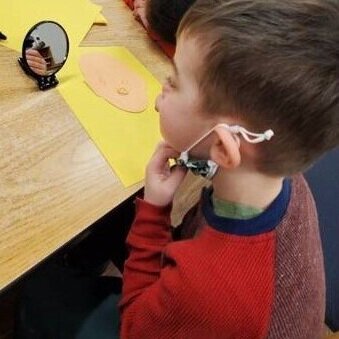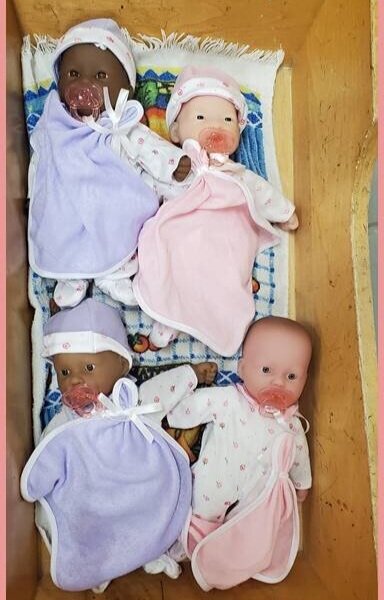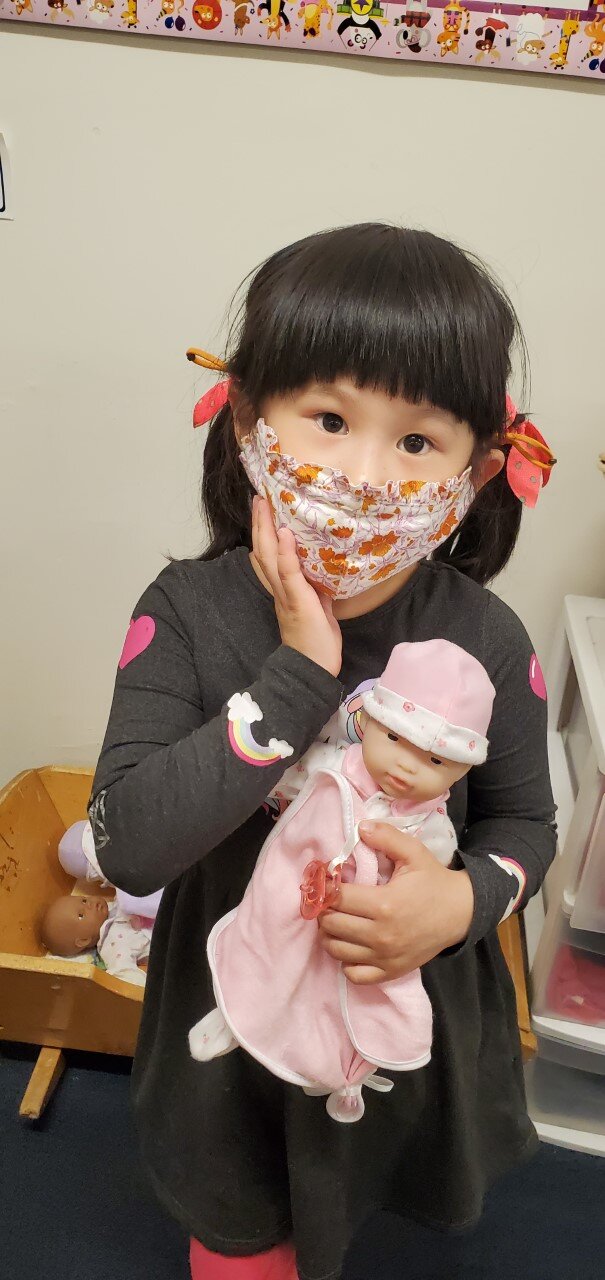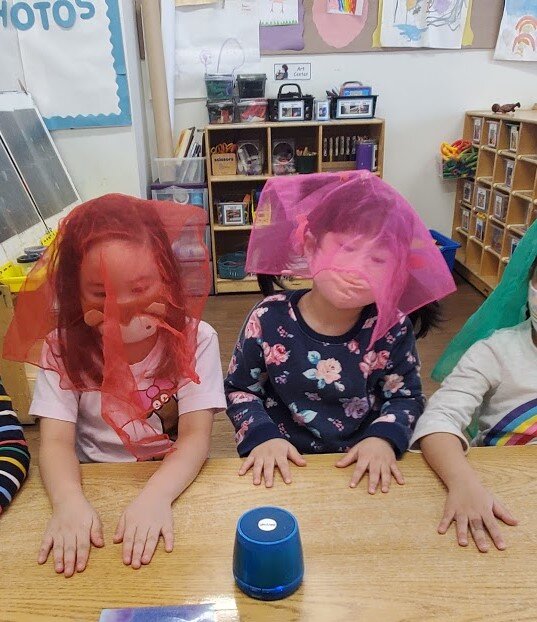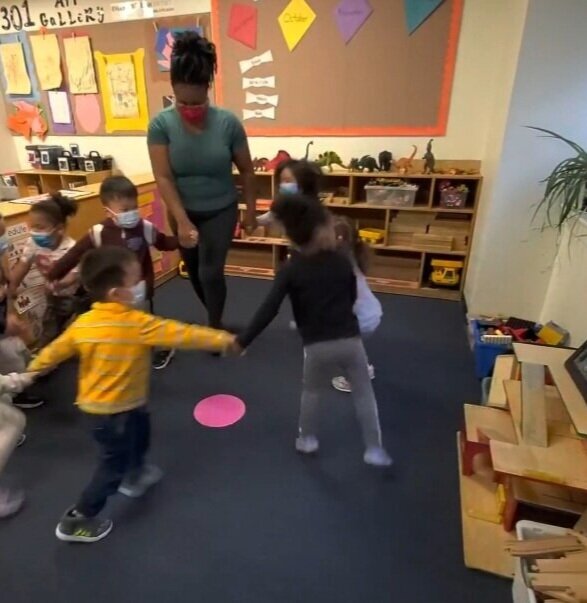Special Feature--Creating Culturally Responsive Classrooms
After reading stories on racial and cultural differences, teachers engage students in a self-portrait activity that invites children to consider their own identity. Teachers display the creations and children's comments about their favorite features.
In the wake of incidents in communities of color in Philadelphia and nationwide, the need for culturally responsive classrooms takes on even greater importance -- and urgency.
Sitting crossed legged on the classroom rug, the preschoolers are gathered for circle time. Teacher Jha' Nyse Lundy-Reid is poised to read All the Colors of the Earth by Sheila Hamanaka, which describes children's skin tones and hair in terms of natural phenomena; and The World Turns Round and Round by Nicki Weiss, a celebration of cultures and family connections. Before Ms. Lundy-Reid begins, she prompts the children to pay attention to the characters' similarities and differences. When the stories end, the students respond:
"They have the same hair!"
"They are wearing different clothes!"
"He has a big hat on!"
"Their skin color is different!"
Ms. Lundy-Reid and lead teacher Nicole Delaine then engage the children in a hands-on activity. Called Mirror Mirror, the lesson builds upon the books' concepts of racial and cultural differences and invites the children to consider their own identity.
The teachers provide paper and crayons in a wide range of skin-tone colors, pipe cleaners, play hair, buttons, and other craft material and ask the children to look into a mirror and create their self-portrait (see pictures below).
Ms. Lundy-Reid then asks each student to examine a classmate's portrait, stating what they like most about it(see picture, left).
Next, she has the children reflect upon their self-portrait and asks them their favorite feature. She continues, asking each student what they like about their 'real' face and why and they respond:
"I like my nose because it can smell!"
"I like my hair because it's curly!"
"My eyes are my favorite because they are special!"
Using Literature as an Entry Point
Using literature as an entry point to lessons about race and acceptance, the teachers' aims are two-fold: to talk about diversity rather than ignore it, which can cause more harm than good for children; and to help children establish positive self-talk practices.
To showcase positive self-talk, posted with the self-portrait are the child's comment about what they liked best about their face.
Planting the Seeds of Acceptance and Self Love Early
"A teacher is in the powerful position of shaping children's perspectives. Just as we teach literacy, math, and science concepts to ensure a successful future, we can help children learn about and respect race and culture. At the essence of the approach is teaching self-love. And as educators of young children, we have a prime opportunity to plant the seeds early. As children grow, our ultimate aim is to equip them on how to advocate for themselves and others and how to conduct themselves," says Nikki Grantham, Early Childhood Coordinator.
Teaching Color Awareness Not Color Blindness
Ensuring children do not feel marginalized or invisible requires practices that intentionally address race. "The children do see differences. As their teacher, I need to show the children that I see and embrace all aspects of them, including race- and cultural-related attributes. We are not teaching children to be color blind or to normalize race erasure, but to be color aware and accepting of things that make us all different," says Ms. Lundy-Reid, whose classroom practice was informed by Reading Your Way to a Culturally Responsive Classroom by Shannon B. Wanless and Patricia A. Crawford, (Young Children, May 2016, National Association for the Education of Young Children).
Children with different face shapes and colors and hair types are displayed on the birthday board.
Reflecting Children's Races and Cultures in the Classroom Materials
Ensuring that the children see themselves reflected in the classroom materials helps connect children to the learning environment.
At Children's Village, such representation is found in books, displays, and play items. Our Preschool Program uses the Blueprints for Early Literacy, which is centered on high-quality books, including those with racially diverse characters, communities, and themes. Posted throughout the classroom are images of individuals of difference races and in a range of professions.
(above) Play items include multicultural baby dolls with a range of skin tones. Play foods and dramatic play clothing represent an array of cultures. Craft materials include colors that reflect a range of hues of skin colors.
Extending Beyond Representation
Representation is important but teachers are also intentional in their approach. "We post the abc's on the wall but that doesn't necessarily mean the children understand the letters, or how the letters make sentences," says Ms. Grantham. "For example, the books we use are representative of the children we serve. Teachers take it a step further, for example, pointing out different hues in skin colors and facets of a particular culture. When I talk about skin color, I use age and developmentally appropriate approaches so children learn where skin color comes from, including references to melanin, the sun, and their family," she says.
Not Limited to One Month or One Theme
Ms. Lundy-Reid stresses that culturally responsive teaching is not limited to one month, such as Black History Month in February, or a particular theme.
"It can and should always be included in our classroom practice. Children's Village uses a social-emotional curriculum. Ms. Nicole and I intentionally provide lessons on kindness and respect and have highlighted different cultures throughout the school year. We also adopt these messages of kindness and respect when talking about students' abilities and disabilities and supporting our friends that need help," says Ms. Lundy-Reid.
She also urges teachers to check in with themselves and reflect on their own biases. "Of course, you can be proud of your race and who you are but, above all, we must be respectful of others who look different and are of a different culture. We are modeling for the children," she says.
Teachers engage students in cultural explorations. (left) With scarves of different colors on their heads, children participate in a Moroccan song and dance called Arsomo Baba, which references painting in different colors. (right) Ms. Lundy-Reid leads students during the Mexican Hat Dance.
Inviting Families to Share
Teachers and administrators communicate with and demonstrate to families that Children's Village welcomes all races and cultures. Teachers invite families to share aspects of their culture, such as traditions and celebrations. Teachers and other staff --even the food served--reflect Children's Village's diverse community.
Building Trusting Teacher-Student Relationships
"Our teachers are creating classrooms in which children can share, explore, and learn about themselves and other races and cultures. This helps all children feel accepted and valued and is pivotal to building the trusting teacher-student relationships that are essential to a high-quality early education experience," says Mary Graham, Executive Director, Children's Village.
"At times, conversations about race and culture may be difficult and uncomfortable. But without them, children can make assumptions and carry them with them to their later years. In our work with young children, we have both the great opportunity and the great responsibility to teach children that we value and respect all cultures and races. It is one step on a path to create a world that is fair, just, and peaceful," says Ms. Graham.


